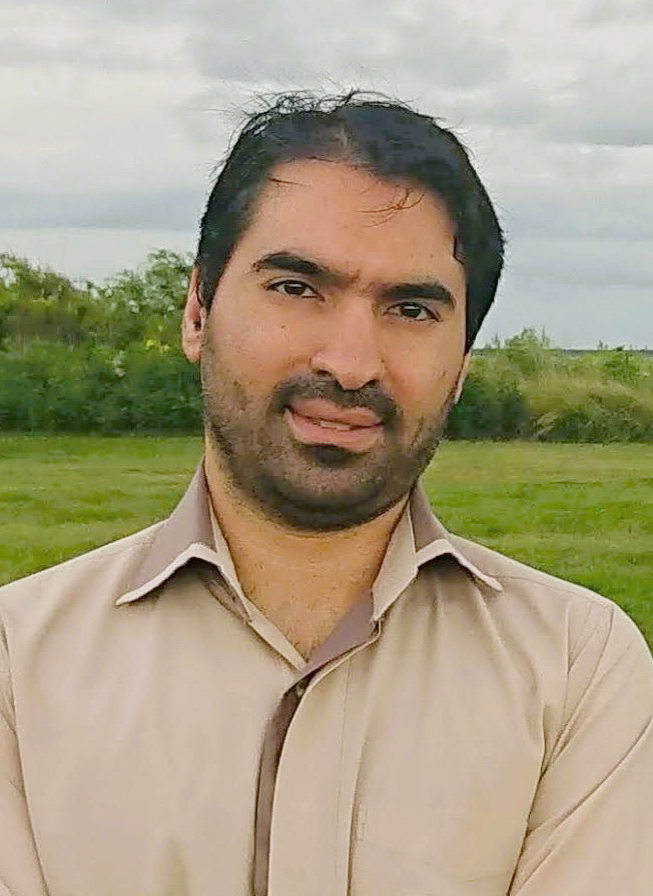Molinaroli College of Engineering and Computing
Faculty and Staff
Mohammad E. Torki
| Title: | Research Assistant Professor |
| Department: | Mechanical Engineering Molinaroli College of Engineering and Computing |
| Email: | [email protected] |
| Office: | 401 Horizon I |
| LinkedIn: | My LinkedIn profile |
| Resources: | Google Scholar My CV |

Education
- Doctor of philosophy (2013–2019): Aerospace Engineering, Texas A&M University
- Master of science (2009–2011): Structural Mechanics and Earthquake Engineering, Sharif University of Technology, Tehran
- Bachelor of science (2004–2008): Structural and Earthquake Engineering, Isfahan University of Technology
Background
Dr. Torki is currently an assistant research professor at the University of South Carolina (UofSC). Prior to his current appointment, he had served as a visiting professor at Embry-Riddle Aeronautical University. Further, he has two postdoctoral experiences, one at the Laboratory for Research on the Structure of Matter (LRSM), University of Pennsylvania, preceded by a first postdoctoral position at the Department of Engineering, University of Cambridge. He earned his PhD from the Department of Aerospace Engineering, Texas A&M University. His research spans a wide variety of subjects in the general area of computational solid mechanics and manufacturing including mechanism-based fracture and failure analysis, scalable manufacturing and design, porous and granular materials, soft matter (colloidal crystals, cells, soft tissues), and high-performance composites (high-entropy alloys, functionally-graded materials, roller-compacted concrete). He has conducted cutting-edge research under the auspices of various luminaries in the abovementioned fields including Prof’s V. Shenoy, V. Deshpande, A. A. Benzerga and J. N. Reddy. His research contributions have been by far reflected in about 35 research articles in high-impact journals including but not limited to Journal of the Mechanics and Physics of Solids, Powder Technology, International Journal of Plasticity, and Journal of Sound and Vibration. Along with research, he has substantive teaching experience for advanced graduate-level courses in Continuum Mechanics and Engineering Fracture Mechanics as well as various undergraduate senior and junior-level courses in relevant subjects.
Research Overview
As a research faculty member, Dr. Torki's current position is primarily driven by direction and conduction of research on data-driven multi-scale material failure, with particular focus on extensive property extraction of highly anisotropic metals from analysis of minimal data-rich experiments. The area of interest is highly gravitating to the Aerospace, Automotive, Marine and Structural Engineering sectors.
He is now serving as a technical lead, in collaboration with Dr. A. Gross, for a relevant project funded by the "Defense Advanced Research Projects Agency" (DARPA)
Dr. Torki's research interests:
- Multi-scale fracture and material failure.
- Microstructural effects in material failure.
- Scalable material manufacturing.
- Soft materials: Colloidal crystals, Cells and Soft tissues.
- Multi-phase materials: Homogenization, Phase-Field modeling, Discrete-Element modeling.
- Multifunctional and composite materials: Particle-based materials, Functionally-graded materials (FGM’s), Fiber-reinforced concrete, High-entropy alloys (HEA’s).
- Structural mechanics: Failure-based design, Vibration, Static and Dynamic Instability.
Featured Publications
- M. E. Torki, F. Liu, R. Xu, Y. Chen, J. Fredberg, Z. Chen (2024), “Bridging the Gap
in Cancer Cell Behavior Against Matrix Stiffening: Insights from a Trizonal Model”,
eLife (under review).
- M. E. Torki, F. A. Medrano, J-B. Leblond, A. A. Benzerga (2024), “A Criterion for
Coalescence of Three-Dimensional Voids”, Mechanics of Materials 196: 105077.
- M. E. Torki and V. S. Deshpande (2023), “A Buoyancy-Assisted Mechanism of Scalable
Colloidal Crystallization”, Advanced Powder Technology 34(8): 104099.
- M. E. Torki, F. Medrano, A. A. Benzerga and J-B. Leblond (2023), “A Model of Void
Coalescence in Columns Journal of the Mechanics and Physics of Solids 171: 105134.
- M. E. Torki (2022), “Scalable Processing of Granular Crystals by High-Frequency Oscillation”,
Powder Technology 395: 822-837.
- M. E. Torki and A. A. Benzerga (2022), "Ductile Fracture in Plane Stress", ASME. Journal
of Appllied Mechanics. 89(1): 011001. https://doi.org/10.1115/1.4052106.
- M. E. Torki, S. M. Keralavarma, and A. A. Benzerga (2021), “An Analysis of Lode Effects
in Porous Material Plasticity”, Journal of the Mechanics and Physics of Solids 153:
104468.
- M. E. Torki (2019), “A Unified Criterion for Void Growth and Coalescence under Combined
Tension and Shear”, International Journal of Plasticity 119: 57-84.
- M. E. Torki and A. A. Benzerga (2018), “A Mechanism of Failure in Shear Bands”, Extreme
Mechanics Letters 23:67-71.
- M. E. Torki, C. Tekoğlu, J.-B. Leblond, and A. A. Benzerga (2016), “Theoretical and
Numerical Analysis of Void Coalescence in Porous Ductile Solids under Arbitrary Loadings”
International Journal of Plasticity 91: 160-181.
- M. E. Torki, A. A. Benzerga, and J.-B. Leblond (2015), “On Void Coalescence under
Combined Tension and Shear,” Journal of Applied Mechanics, Vol. 82(7), Article No.
071005. DOI 10.1115/1.4030326.
- S. B. Talaeitaba, M. Halabian, and M. E. Torki (2015), “Nonlinear Behavior of FRP-Reinforced
Concrete-Filled Double-Skin Tubular Columns using Finite Element Analysis”, Thin-Walled
Structures (95): 389-407.
- M. E. Torki, M. T. Kazemi, H. Haddadpour, and S. Mahmoudkhani (2014), “Dynamic Stability
of Functionally Graded Cylindrical Shells under Axial Follower Forces,” Thin-Walled
Structures 79: 138-146.
- M. E. Torki, M. T. Kazemi, J. N. Reddy, H. Haddadpour, and S. Mahmoudkhani (2014),
“Dynamic Stability of Functionally Graded Cylindrical Shells under Distributed Axial
Follower Forces,” Journal of Sound and Vibration 333(3): 801-817.
- M. Madhkhan, A. Kianpour, and M. E. Torki (2013), “Life-Cycle Cost Optimization of
Prestressed Simple-span Concrete Bridges with Simple and Spliced Girders,” Iranian
Journal of Science and Technology (IJST), 37(C1): 53-66.
- M. Madhkhan, R. Azizkhani, and M. E. Torki (2012), “Effects of Pozzolans together with Steel and Polypropylene Fibers on Mechanical Properties of RCC Pavements,” Journal of Construction and Building Materials 26: 102-112.